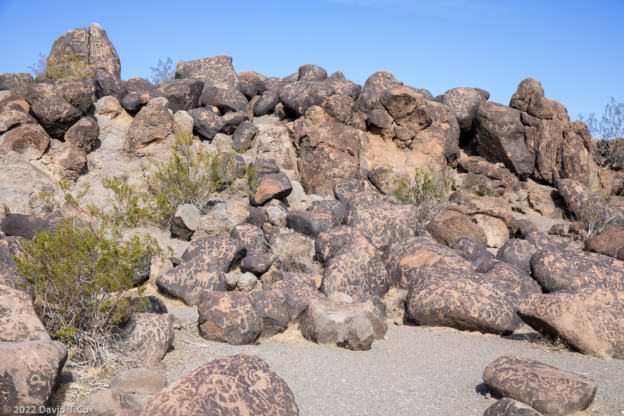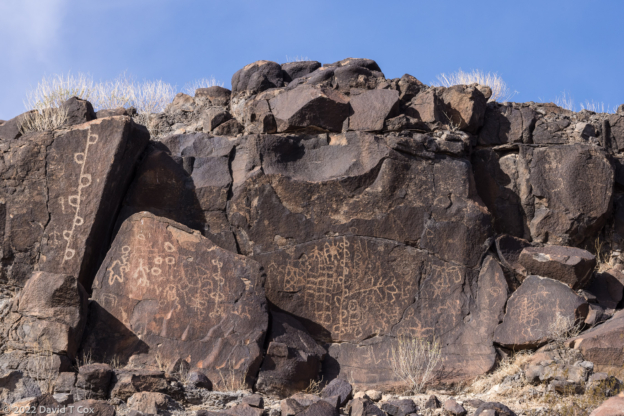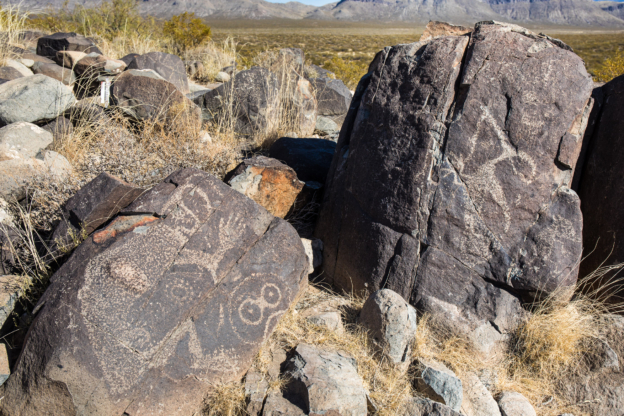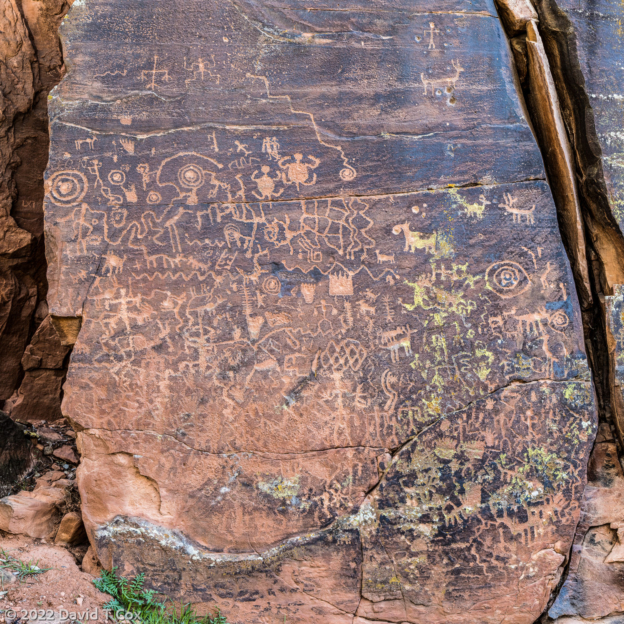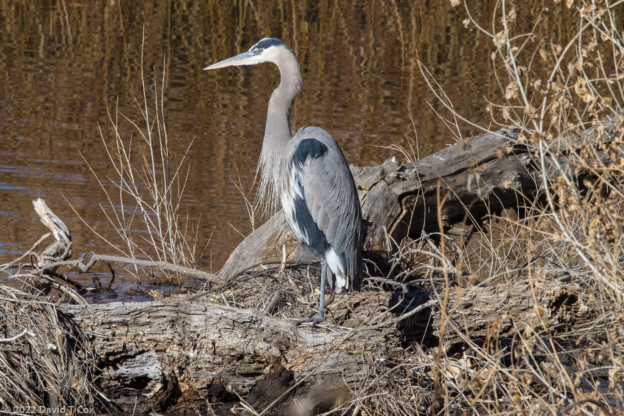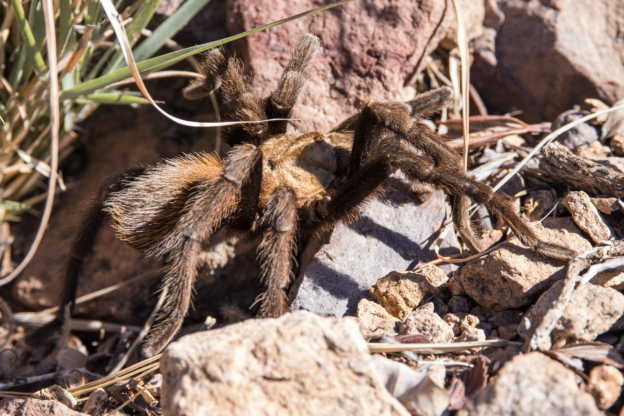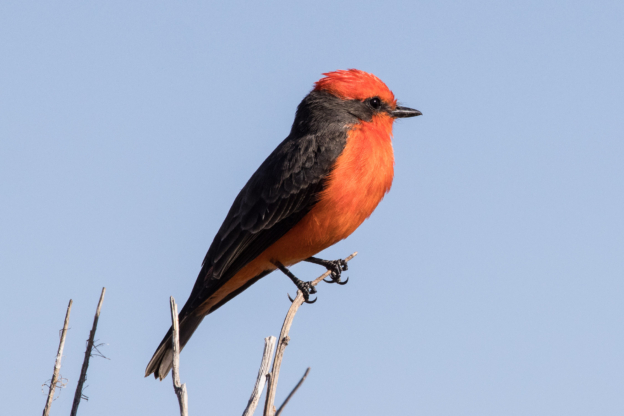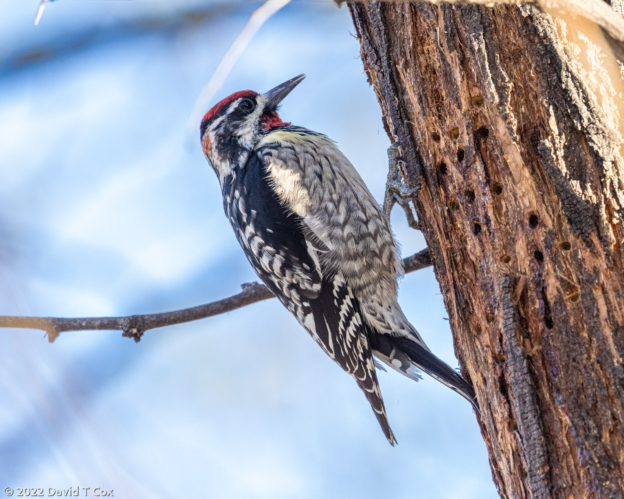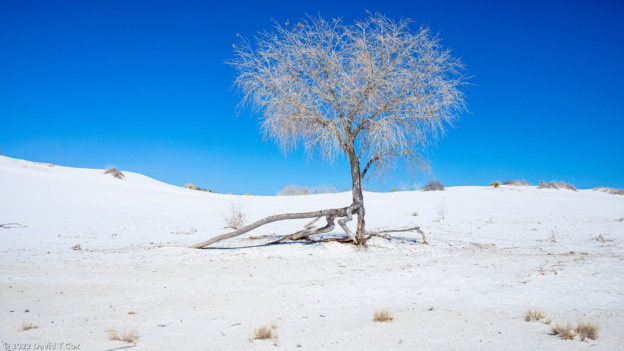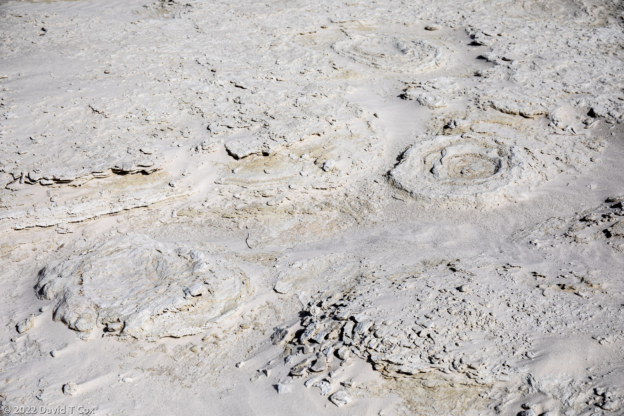All Photos Are Below the Travelogue Text
Click on Any Photo To Open Slide Show
To print the travelogue, right click anywhere on the page. Choose "Print" from your browser dialog box. You can choose Save to PDF in the browser print window.
Share your thoughts.
Email Dave - coxdavid55@hotmail.com
Covid has halted all trips in the last year except for several short hops around the Southwest. I am on my way, finally, on an international trip to Costa Rica for 3 months of wild park visits. Before going I will post a few pictures of birds, petroglyph sites and the famous White Sands “footprint” site I found interesting in the last year.
The rock art is from a hodgepodge of cultures; Sears Point and Painted Rock sites, along the now dried bed of the Gila River in southern Arizona, contain a combination of Hohokom and Patayan petroglyphs from about a 1000 year ago, along with a fair number of much older archaic petroglyphs. The Three Rivers site in New Mexico is an unusual site with Mogollon petroglyphs from about 1000 years ago. The VBarV Ranch site has the fabulous Sinaguan puebloan petroglyphs, also about 1000 year old.
The one really special trip I was fortunate to make involved tagging along with a weekend field trip for a graduate archeology class from the University of Arizona – the seminar subject was the peopling of the Americas. For almost 80 years most archeologists have believed the earliest humans arrived in the Americas, crossing over the land bridge to Alaska, at the end of the last ice age about 12 to 13 thousand years ago and could only have migrated down into North and South America after the glaciers started melting in Alaska and Canada. For over 40 years occasional finds at sites as diverse as Florida and Tierra del Fuego on the southern tip of S America have presented suggestions of much earlier human presence, some over 20,000 years ago, but in all these cases the dating had problems. Further, there were no convincing theories of how humans could have arrived from alternate routes before the end of the glaciation.
Last year a newly published report from White Sands in New Mexico revealed the first “solid” dating of human footprints along an ancient lake bed, finding tiny grass seeds both on top and immediately below the footprints which for the oldest layers consistently dated to 21,000 to 23,000 year ago. These human footprints exist along with thousands of Pleistocene animal footprints of ground sloths, bison, mammoths, dire wolves, bears and saber tooth cats. The site now is worked every January when the weather best permits.
Dr. Vance Holliday is teaching the graduate class and led the field trip – he is one of the authors of the published paper on the footprints. I drove to the site from the White Sands National Park with Clare Connelly, the Park archeologist and another of the paper’s authors. The ancient lake edge and most of the thousands of footprints are located in an area at the far northern reaches of the Park (well beyond any roads or visitor areas) and extend far into the Army’s White Sand Missile Range. No roads exist to the site, which is approached by 4-wheel drives over the gypsum white sand desolation. Passing through the site are multiple lines of mammoth footprints leading presumably to the lake edge. At the human footprint site, Clare uncovered and showed us several examples; one small area, about 2 X 2 feet, contained a large cave bear footprint, half covered by a human footprint, and just behind were prints of a baby bear, dire wolf, bison and sloth. A little deeper were footprints of children, and at another spot a perfectly preserved hand print as if an adult tripped and caught herself with a spread hand in the mud.
I have included a couple of photos of mammoth prints at the site, but provided no details on the approximate location of the site nor photos of the human prints, as those we saw have not yet been subject to a published report. Other than the professionals working the site, it will never be open to the public, though the footprints are being plaster cast and a replica of parts of the site will presumably be built in the coming years near the National Park touristed areas.
Tomorrow I fly to San Jose and should be uploading periodic reports and photos in a couple of weeks. Later Dave
- Sears Point Petroglyphs, Gila River W of Gila Bend, AZ
- Painted Rock Petroglyphs, Gila River W of Gila Bend, AZ
- Three Rivers Petroglyphs, Jornada Mogollon 900-1400 AD, NM
- vBarV Petroglyph Panel, Pano component 3, Sinagua, AZ
- Great Blue Heron, Watson Lake and Dells, near Prescott, AZ
- White-crowned Sparrow, adult & immature, Watson Lake near Prescott, AZ
- Tarantula, Chisos Basin, Big Bend NP, TX
- Sandhill Crane, Whitewater Draw, AZ
- Vermilion Flycatcher, Whitewater Draw, AZ
- Red-naped Sapsucker female, Sweetwater, Tucson, AZ
- Red-tailed Hawk, road from Pecos to Carlsbad, TX
- Lone Tree, White Sands NP, NM
- Mammoth footprints, White Sands footprint site, White Sands NP, NM
- Mammoth footprints, White Sands footprint site, White Sands NP, NM
To print the travelogue, right click anywhere on the page. Choose "Print" from your browser dialog box. You can choose Save to PDF in the browser print window.
Share your thoughts.
Email Dave - coxdavid55@hotmail.com
